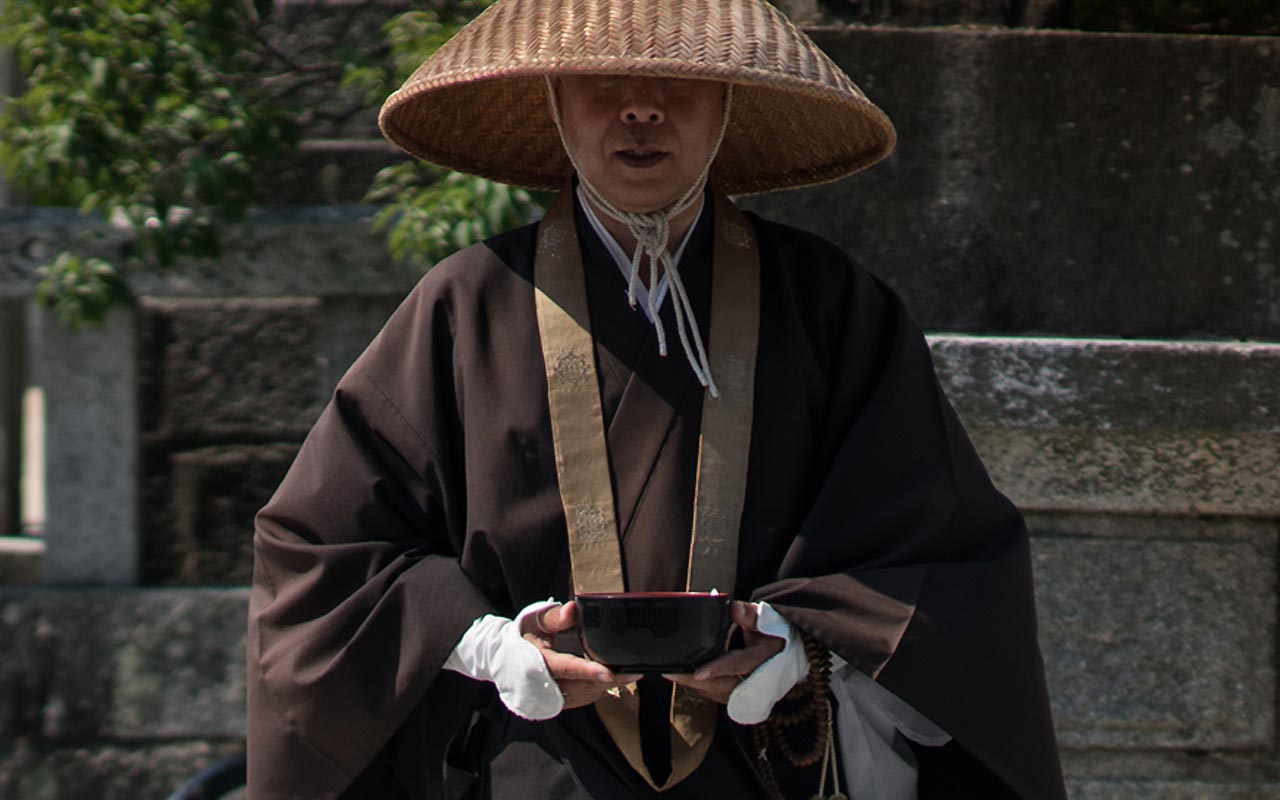What are the Meaning and Significance of Zen Buddhism Symbols?
There are several symbols associated with Zen Buddhism that can be helpful in inspiring and reminding practitioners of their spiritual goals.
These symbols, from the Enso circle to Buddha statues, have a rich history and deep meaning within the Zen tradition.
However, Zen Buddhism is a practice that emphasizes the direct experience of reality, going beyond symbols and concepts to cultivate awareness and mindfulness.
In this article, I will examine some of the most common Zen Buddhism symbols, their history, and their significance in Zen practice. We will also explore how these symbols relate to the core of Zen practice: cultivating awareness through zazen or seated meditation.
Zen Buddhism and the Transcendence of Symbols
Zen Buddhism is often associated with symbols, however, it’s important to note that Zen practice goes beyond these symbols and external objects.
At the core of Zen practice is zazen (zen meditation), which aims to cultivate awareness and a deep understanding of reality.
While symbols and objects can serve as helpful reminders and inspirations, they are not necessary for spiritual development in Zen Buddhism. Zen Buddhism emphasizes liberation through direct experience rather than attachment to symbols or concepts.
The focus is on experiencing and embodying mindfulness and compassion in everyday life, rather than relying on external symbols or practices. The true essence of Zen lies in the direct experience of reality beyond any attachment to symbols or concepts.
What are the Symbols of Zen Buddhism?
Zen Buddhism is a practice that emphasizes direct experience over symbols and concepts. However, several symbols have deep meaning within the Zen tradition. These symbols can inspire and remind practitioners of their spiritual goals.
PS: You might be looking for the complete list of Buddhist Symbols.
Enso Circles

Enso is a circular brushstroke with black ink on white paper. The brushstroke begins and ends at the same point, creating a seamless circle with a visible starting and ending point. The circle often needs to be completed, with a small gap or opening on one side.
Origin: Enso originates in Japanese calligraphy, often used as artistic expression. The first known depictions of Enso date back to the 17th century, but its origins may be even earlier. Over time, Enso became a popular symbol in Zen Buddhism, representing the concept of enlightenment and the interconnectedness of all things.
Meaning: The Enso circle represents several ideas in Zen Buddhism. Its incomplete shape conveys that nothing in life is perfect or complete and that imperfection is an inherent part of existence. The circle symbolizes all things’ interconnectedness and the cyclical nature of reality. The single brushstroke used to create the circle is seen as a symbol of spontaneity and freedom from the constraints of conventional thinking. In Zen Buddhism, creating an Enso is often used to focus the mind.
Enso is also used as a symbol of the void, or the “mu” of Zen Buddhism. This refers to a state of emptiness, where the mind is free from distractions and attachment to material things. The gap or opening in the Enso circle represents this state of emptiness and the potential for infinite possibilities.
Bodhisattva (Bosatsu)
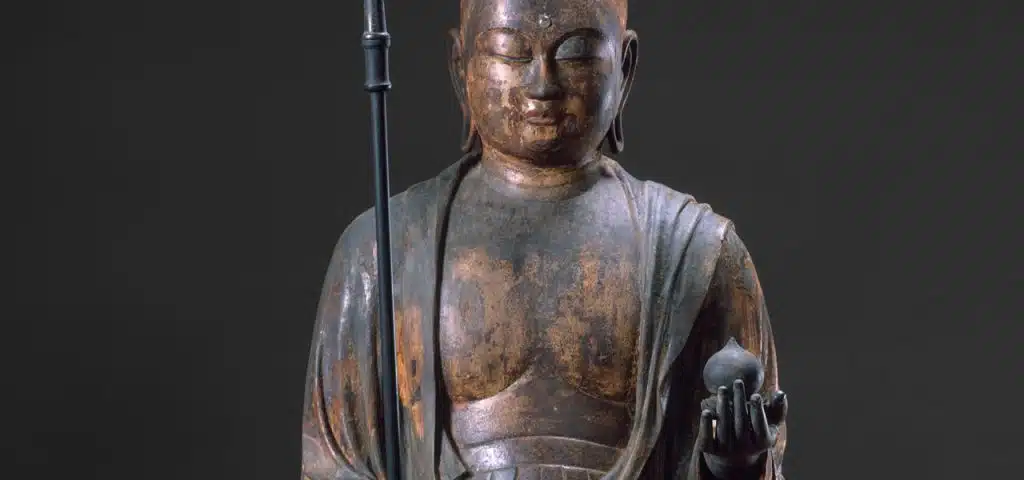
Bodhisattva is a Sanskrit term that refers to a person on the path to enlightenment who vowed to help all sentient beings achieve liberation from suffering. In Zen Buddhism, the concept of the Bodhisattva, called Bosatsu in Japanese, is central to the practice of compassion and the cultivation of wisdom.
Origin: The concept of the Bodhisattva originated in the Mahayana branch of Buddhism, which emerged in India around the first century CE. The Mahayana tradition emphasized the importance of compassion and the idea that anyone could attain enlightenment, not just monks and nuns. The Bodhisattva ideal became a key feature of Mahayana Buddhism, spreading to other parts of Asia, including China and Japan.
Meaning: In Zen Buddhism, the Bodhisattva is seen as a model of compassion and wisdom, and practitioners aspire to embody the qualities of the Bodhisattva in their lives. The Bodhisattva vow is seen as a way to cultivate these qualities in oneself and work towards liberating all sentient beings. The Bodhisattva is often depicted as dedicated to the well-being of others. It has a deep understanding of the nature of reality.
The Bodhisattva ideal is closely linked to Zen Buddhism’s concept of sunyata, or emptiness. This refers to the idea that all phenomena are devoid of inherent existence and that the self is not separate from the world. The Bodhisattva’s commitment to helping others is seen as an expression of this understanding, as they recognize that all beings are interconnected and that their own liberation is intimately tied to the liberation of others.
In Zen Buddhism, the Bodhisattva is often portrayed as a figure who has attained a high level of spiritual realization but chooses to remain in the world to help others rather than achieve personal liberation. This is seen as a powerful expression of compassion and selflessness, which ideal Zen practitioners strive to emulate.
Kesa (Monk’s Clothing)
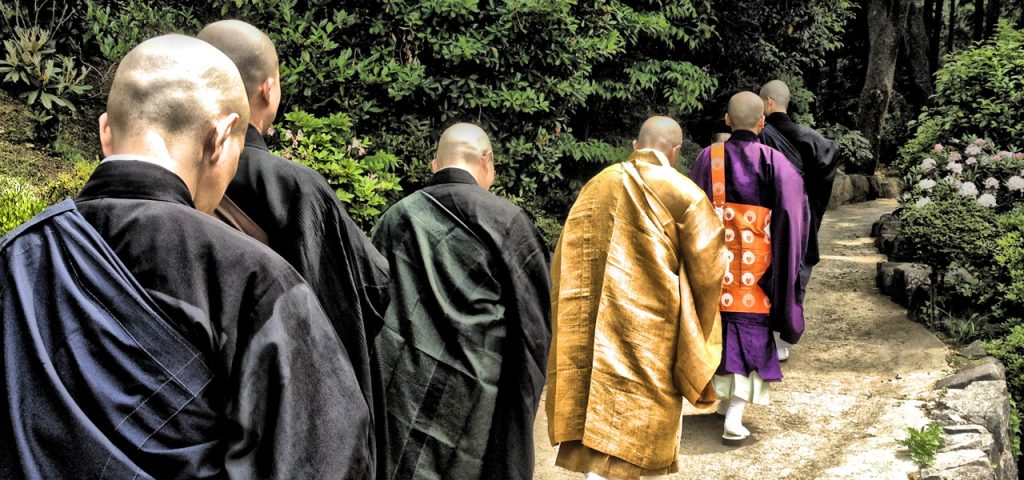
Kesa is a rectangular piece of cloth worn by Zen Buddhist monks and nuns as a symbol of their commitment to the Buddhist path. It is draped over the shoulders and held in place by a belt or sash.
Origin: The Kesa has its roots in ancient India, where it was worn by Buddha and Buddha’s followers who renounced worldly possessions in pursuit of spiritual liberation. When Buddhism spread to China and later to Japan, the kesa became a symbol of monasticism. They were adopted by Zen Buddhist monks and nuns as part of their attire.
Meaning: In Zen Buddhism, the kesa is seen as a symbol of the Buddha’s teachings and a reminder of the monk or nun’s commitment to the Buddhist path. Making the kesa is a form to cultivate mindfulness and attention to detail. The cloth used to make the kesa is traditionally made from donated fabric and is sewn together by the monk or nuns as part of their training.
The kesa is a plain cloth without any elaborate decoration, as Zen Buddhism emphasizes simplicity and frugality. The absence of ornate decoration on the kesa symbolizes the monk or nun’s renunciation of material possessions and attachment to worldly things.
Rakusu (Small Kesa)

The rakusu is a smaller version of the kesa, the traditional Buddhist robe. It is worn by practitioners during daily activities like working, cleaning, gardening, or cooking.
Origin: The rakusu originates in the kesa, which was initially a patchwork robe made from discarded rags by the Buddha’s disciples. Over time, it symbolized the monk’s ordination and spiritual commitment. The rakusu is a simplified version of the kesa. It is believed to have been introduced by the Japanese monk Dogen Zenji in the 13th century as a more practical alternative for Zen monks.
Meaning: Like the kesa, the rakusu represents the monk’s commitment to the Buddhist path and the precepts of Zen Buddhism. It is considered a symbol of the Buddha’s robe and a reminder of the Buddha’s teachings. It symbolizes the practitioner’s commitment to the practice and serves as a reminder to cultivate mindfulness in daily life.
It’s worth mentioning that the rakusu is often adorned with a lineage chart, a list of Zen ancestors who have transmitted the teachings from one generation to the next. This emphasizes the importance of lineage and the continuity of the Zen tradition.
Unlike the kesa, which is reserved for fully-ordained monks, the rakusu can also be bestowed upon lay practitioners who receive the precepts or bosatsukai. This allows them to attain the title of Bodhisattva and signifies their commitment to the path of awakening.
Daruma Dolls

The Daruma doll is a small, round doll with a characteristic shape and design. It is typically made of papier-mâché and is painted red with a white face and beard. The doll is often depicted with large, staring eyes with no pupils and a thick, bushy eyebrow.
Origin: The Daruma doll originates in Zen Buddhism and is named after the Indian monk Bodhidharma, who founded the Zen school of Buddhism. According to legend, Bodhidharma meditated in a cave for nine years, during which time his limbs withered away. The Daruma doll is said to represent Bodhidharma, and the round shape of the doll is a reference to the Zen concept of ensō or the circle of enlightenment.
Meaning: The Daruma doll is considered a symbol of perseverance and good luck in Zen Buddhism. It is often given as a gift to someone embarking on a new endeavor or facing a difficult challenge. Traditionally, when a person receives a Daruma doll, they paint in one of the doll’s eyes to represent their goal or wish. The other eye is left unpainted. Once the purpose or wish has been achieved, the person paints in the second eye to express gratitude and acknowledge their accomplishment.
The Daruma doll is also associated with the Zen concept of muga, or non-attachment. The doll’s large, staring eyes with no pupils also represent the Zen practice of “just sitting,” or zazen, in which one sits and meditates without any particular goal or intention. The idea is to let go of attachment to outcomes and be present in the moment.
The Daruma doll is a powerful symbol in Zen Buddhism, representing the Zen concepts of perseverance, non-attachment, and the circle of enlightenment. It serves as a reminder of the importance of staying focused on one’s goals while also letting go of attachment to outcomes.
Jizo Statues

Jizo is a prominent Bodhisattva in Zen Buddhism, often depicted as a benevolent guardian of children and travelers. Jizo is also associated with the concept of the six realms of existence and the vow to save all beings from suffering.
Origin: Jizo has been revered in Japan for centuries, with a rich cultural and religious significance. The origins of Jizo can be traced back to India, where the figure was known as Ksitigarbha. Jizo was introduced to Japan in the 9th century and has become a central figure in Japanese Buddhism, particularly in the Zen tradition.
Meaning: In Zen Buddhism, Jizo represents the compassionate nature of enlightenment and the vow to help all sentient beings. Jizo is often depicted as a benevolent figure who guides and protects children and travelers, particularly those who are vulnerable or lost.
Jizo can serve as a reminder of the compassion and selflessness at the heart of the Zen path.
Zen Gardens
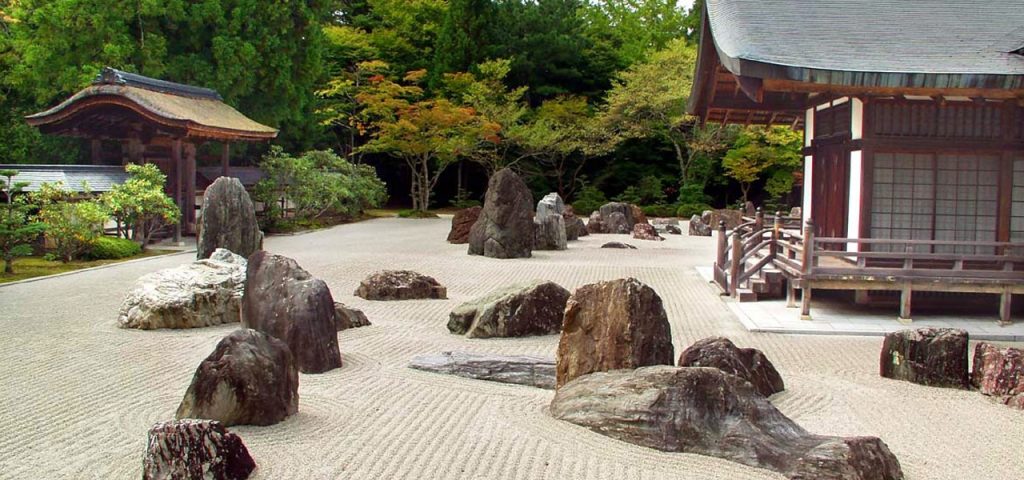
Zen gardens, also known as Japanese rock gardens or karesansui, are miniature landscapes composed of rocks, sand, and sometimes water. They are designed to evoke a sense of peacefulness, serenity, and contemplation. They are often found in Zen temples, monasteries, and private homes.
Origin: The origins of Zen gardens are still being determined, but they are believed to have originated in China and been brought to Japan by Zen monks during the Kamakura period (1185-1333). The first Zen gardens in Japan were designed to help monks develop mindfulness. They were often accompanied by a small tea house where they could rest and contemplate.
Meaning: Zen gardens are often used for mindfulness and contemplation. The garden’s design is meant to inspire feelings of simplicity, balance, and harmony and to encourage a sense of calmness and stillness in the viewer.
One of the key principles of Zen gardens is the use of minimalism. The gardens typically consist of only a few elements, such as rocks and sand. The rocks in the garden are often arranged in a specific pattern, intended to represent mountains or islands in a sea of sand. They are designed to convey a sense of emptiness and spaciousness.
Zen Calligraphy

Zen calligraphy emphasizes the meditative process of creating artwork over the final product. It involves using a brush and ink to create characters or symbols, focusing on the brush strokes and the artist’s state of mind rather than on the legibility of the writing.
Origin: Zen calligraphy has its roots in China, where it was practiced by Zen monks as a form of meditation. It was brought to Japan during the Kamakura period (1185-1333). It became part of Zen Buddhism, with many Zen masters using calligraphy to express their understanding of the dharma.
Meaning: In Zen Buddhism, calligraphy is considered a form of spiritual practice, with the act of writing as a way to cultivate mindfulness, concentration, and insight. The calligrapher strives to achieve a state of emptiness (see mushin) and presence in which the brush moves spontaneously. The writing manifests the artist’s innermost thoughts and emotions.
One of the key principles of Zen calligraphy is the concept of shoshin, or “beginner’s mind”. This refers to the openness, curiosity, and receptivity one should bring to the practice, regardless of skill or experience level. By approaching each stroke with a sense of presence and openness, the calligrapher can tap into the spontaneity and creativity of the moment and allow the writing to flow naturally.
Another important principle of Zen calligraphy is the use of simplicity and minimalism. The calligrapher strives to convey a sense of spaciousness and emptiness in their writing, with each brush stroke carrying meaning and intention. The goal is not to create a perfect or beautiful piece of writing but to express one’s innermost thoughts and feelings in a direct and unmediated way.
Buddha Statues
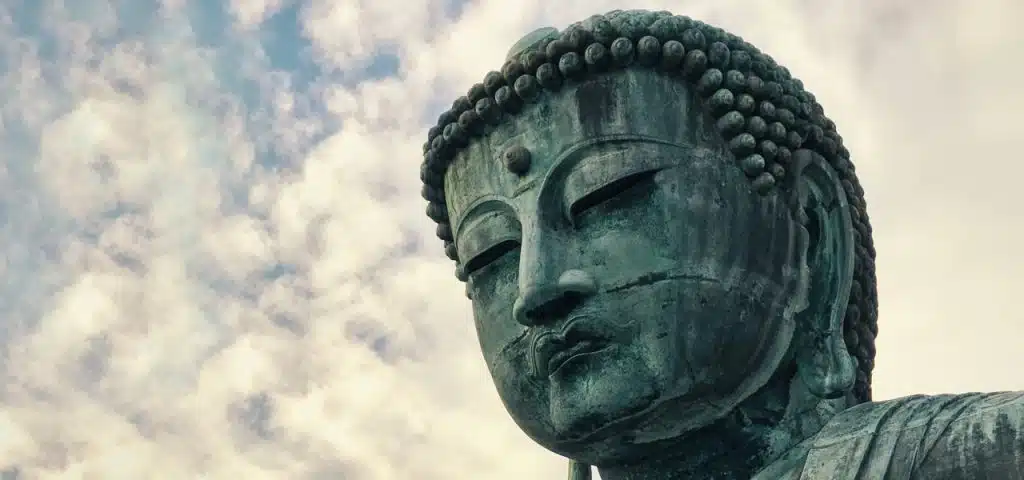
Buddha statues are common in Zen Buddhist temples and meditation centers. These statues come in various sizes, materials, and poses, but they all represent the enlightened being known as the Buddha. Despite their popularity, it’s important to note that Zen Buddhism does not emphasize using statues as a religious practice.
Origin: The tradition of creating Buddha statues dates back to ancient India, where the historical Buddha, Shakyamuni, lived and taught. After his death, his followers created statues in his likeness to honor his teachings and inspire others to follow the path of enlightenment. As Buddhism spread throughout Asia, the art of creating Buddha statues evolved, with different cultures developing their unique styles and materials.
Meaning: Buddha statues are symbols of the enlightened state of being and serve as a reminder of the Buddha’s teachings. They can inspire practitioners to cultivate compassion, wisdom, and mindfulness, central to Zen Buddhism. Buddha statues are also considered to represent the Buddha’s physical presence. Some believe that by offering reverence to a statue, they connect with the Buddha’s essence.
In Zen Buddhism, statues are less central than in other Buddhist traditions. Zen emphasizes the direct experience of reality and the cultivation of mindfulness rather than reliance on external symbols or objects. However, Zen temples and meditation halls may still have Buddha statues as a reminder of the Buddha’s teachings, nothing more.
Fudo-Myoo Statues

Fudo-Myoo, also known as Acala in Sanskrit, is a Buddhist figure commonly depicted in Japanese art and is a popular statue in Zen Buddhism temples and meditation centers. Fudo-Myoo statues are often displayed with a fierce expression, holding a sword in one hand and a rope in the other.
Origin: Fudo-Myoo originated in India as a protector of Buddhist teachings. The Japanese adopted it as a central figure in their Buddhist tradition. In Japanese Buddhism, symbolically, Fudo-Myoo is considered a powerful protector who defends the teachings. Fudo-Myoo statues are often found in temples and shrines throughout Japan.
Meaning: Fudo-Myoo statues symbolize protection and strength, representing the fierce determination and willpower needed to overcome obstacles to enlightenment. Zen practitioners may use Fudo-Myoo statutes as s symbol to remind them to stay focused on their practice and persevere through challenges.
While Fudo-Myoo statues can be a helpful reminder and inspiration, they are optional for spiritual development in Zen Buddhism as it focuses on the direct experience of reality.
Begging Bowl

The begging bowl is an important symbol in Zen Buddhism and represents the practice of alms-seeking or receiving. It is a simple bowl Zen monks, and nuns use to collect food offerings from the community during their daily begging rounds. The practice of begging is seen as a form of humility and a way to cultivate gratitude and generosity.
Origin: The tradition of alms-seeking has its roots in the Buddha’s teachings, where he encouraged his followers to rely on the generosity of others for their basic needs. In Zen Buddhism, the practice of alms-seeking was brought to China by Bodhidharma, the legendary founder of Zen. It was adopted as a way of life by Zen monks and nuns.
During China’s Tang dynasty (618-907), alms-seeking became more formalized. Monasteries established fixed schedules and routes for their daily begging rounds. The begging bowl became an essential tool for this practice. Many masters emphasized the importance of maintaining a simple and unadorned bowl to cultivate humility and gratitude.
Meaning: The begging bowl represents the Zen Buddhist values of simplicity, humility, and gratitude. By relying on the generosity of others for their basic needs, Zen monks and nuns learn to let go of their attachment to pride and material possessions, thus cultivating a sense of contentment with what they have.
In addition, the practice of alms-seeking is seen as a way to cultivate generosity in the community. By offering food to the monks and nuns, laypeople can practice giving and develop their sense of generosity and compassion.
The begging bowl is also a symbol of interdependence and interconnectedness. By relying on the community’s support for their basic needs, Zen monks and nuns recognize that they are not separate from the world around them but are part of a larger network of beings.
The begging bowl reminds us of our interdependence and the importance of cultivating compassion and generosity in our relationships with others.
Conclusion
In conclusion, Zen Buddhism symbols are powerful reminders of the spiritual goals of practitioners. Still, let me repeat that they are not the essence of the practice.
The true goal of Zen Buddhism is the cultivation of oneness and mindfulness, which can be achieved through zazen and the direct experience of reality.
While symbols such as the Enso circle, Bodhisattva, and Buddha statues have a rich history and deep meaning within the Zen tradition, they are not necessary for spiritual development. Instead, the focus should be on embodying mindfulness and compassion in everyday life beyond any external symbols or concepts.

